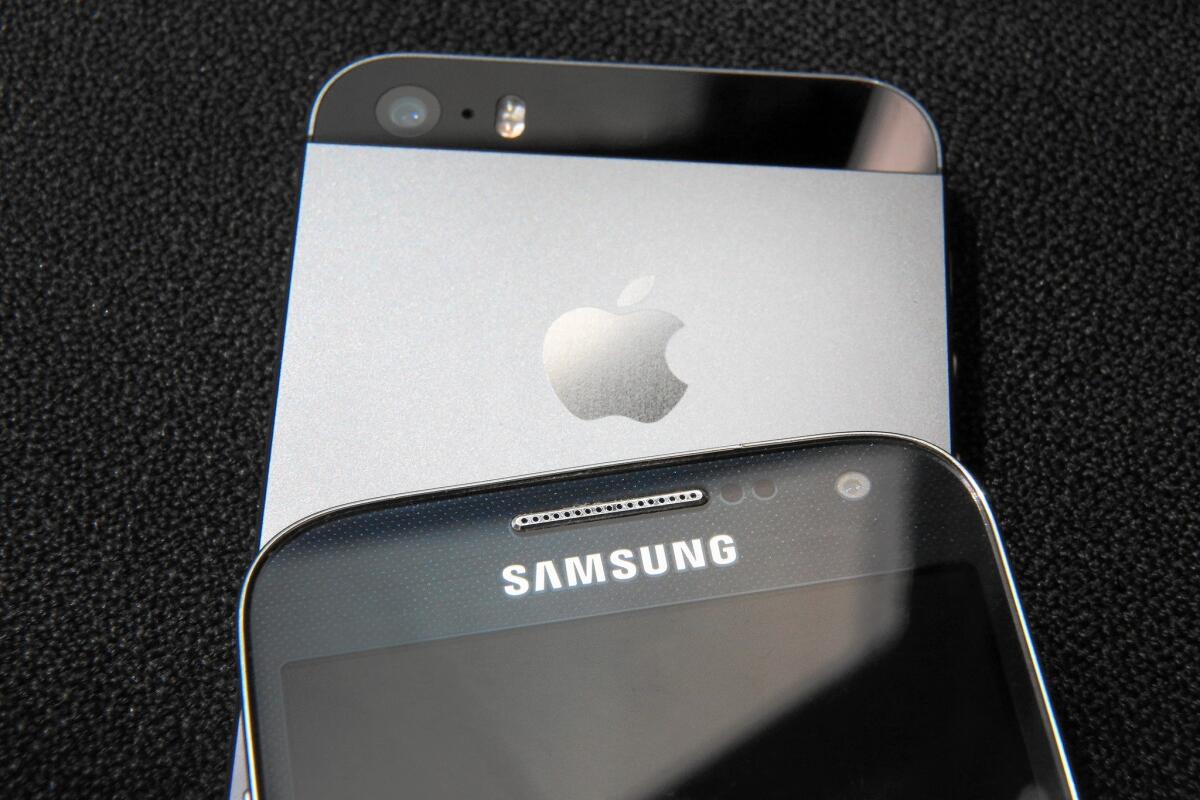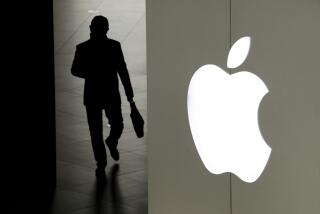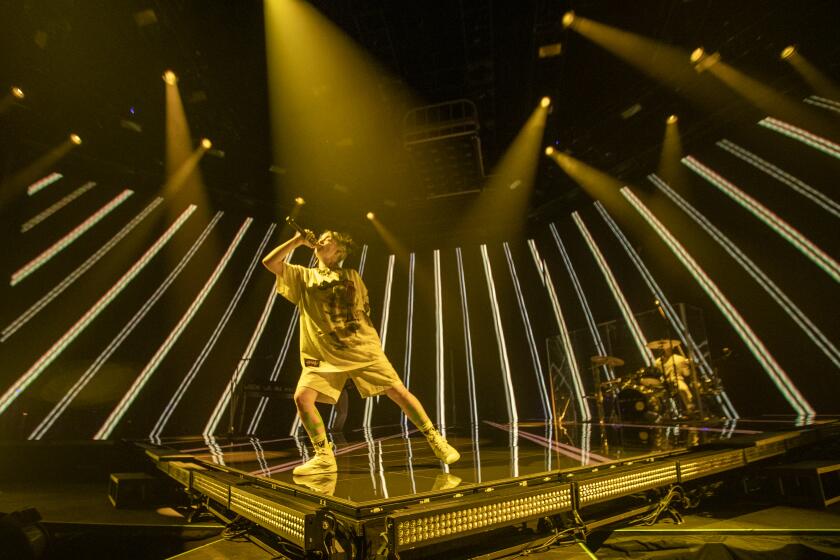U.S. Supreme Court to weigh in on damages in Apple-Samsung patent case

They had been recognizable hallmarks of smartphones for years: Rectangular bodies. Rounded edges. And a colorful grid of app icons.
But Apple Inc., which had patented the designs, took aim at rival Samsung Electronics Co. in 2011, accusing it of illegally copying the look in its phones. A federal jury in San Jose sided with Apple, stoking fears in Silicon Valley that a rarely feuded-over class of patents would become a minefield of legal troubles.
Now, the Supreme Court could put those fears in check.
The high court agreed Monday to hear part of Samsung’s appeal in the long-running dispute with Apple. If the Supreme Court upholds an earlier ruling, Samsung would have to turn over $399 million to Apple, or all the profit from smartphones that took advantage of the iPhone maker’s patents. The large sum led to concerns that holders of design patents would sue for damages with increasing frequency.
But a Supreme Court decision turning over the previous judgment probably would significantly reduce the penalty, amounting to just earnings that could be tied to the rectangular, rounded look and the grid-based layout. That raises a question: How much of a role did the look of Samsung phones actually play in their sales?
To Samsung, many patent law experts and much of the tech industry, it certainly wasn’t 100%.
Samsung’s attorney Kathleen Sullivan said a federal patent court had adopted the “ridiculous” view that Apple was “entitled to the entire profits” earned by Samsung from its phones, “no matter how little the patented design features contributed” to the product.
“In other words, even if the patented features contributed 1% of the value of Samsung’s phones, Apple gets 100% of Samsung’s profits,” Sullivan said.
Smartphones contain thousands of patented inventions, and one of them is “just a tiny fraction of what makes that product valuable,” said Brian Love, co-director of the High Tech Law Institute at Santa Clara University who has supported Samsung in court documents.
“You have a huge mismatch between the contribution to society in the form of the design, and the amount of compensation you can get from the infringers,” Love said.
Apple has had the backing of companies including Oakley Inc., Crocs Inc. and some medical device companies. They all argue that awarding a full share of profits for infringing a design patent is consistent with the law and older cases.
But the Apple vs. Samsung case will be the first in 120 years in which the high court reviews a design patent case. In the late 19th century, the court heard claims over whether the design of a spoon or a saddle infringed the patent of another maker.
Samsung had asked the court to take a deeper look at design patents, which stand in contrast to utility patents that cover functional features. Samsung has argued that design patents cover only ornamental issues and that something such as rounded corners — which the company argues help phones slide into pockets — is a functional quality, not decorative.
But the justices passed up the chance to review the notion of design patents in the smartphone era and said they would rule in the next year only on whether a company guilty of patent infringement can be forced to hand over all related profits, regardless of the extent of the design feature’s significance.
Apple and Samsung will present their arguments this fall, and a ruling is likely early next year. The Supreme Court decision could affect other cases, including a design patent lawsuit Microsoft Corp. filed against software maker Corel Corp. in federal court last December.
Repeatedly in recent years, the justices have intervened and overturned pro-patent rulings by the Federal Circuit Court in Washington, which reviews patent cases.
The latest patent case was the first case of any kind that the Supreme Court has agreed to hear since the death of Justice Antonin Scalia on Feb. 13.
Love said he’d bet that the court’s decision to hear the case is a signal that it plans to rule in Samsung’s favor. If so, the concern over big verdicts in design patents cases could be wiped away.
“It just reinforces the futility: You might not even get enough to cover your lawyers,” he said.
Twitter: @peard33, @DavidGSavage








